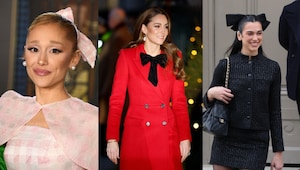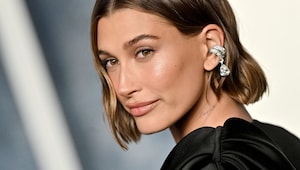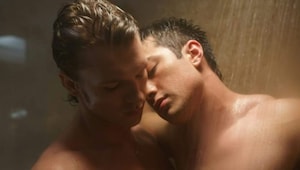‘So, Who’s the Man In the Relationship?’
Our columnist—an outspoken Indian homosexual woman—questions the odd, invariable need to define male and female, butch and femme, in same-sex relationships (and why wearing a lipstick makes you less of a lesbian)…

“My partner and I have been thinking a lot about lipsticks lately. According to some model of political lesbianism, we’re an anomaly because we like to wear lippies. Recently, on a date night with another same-sex couple, both of us excused ourselves for a quick re-dab of lip paint—a usual behaviour after two rounds of vodka-soda, right? Not so much for our lesbian friends, who leaned forward, ironically, and commented, ‘So, who’s the man in the relationship?’
This isn’t a new question. It doesn’t matter where you’re placed on the sexuality spectrum or what your take on women’s lib is—gender is a visual appearance, and nothing says, ‘I am a woman’ like red lips and Manolos. My partner and I have a pretty bad rep since we are two femmes in a relationship who enjoy fashion and make-up. And that, too often, upsets the community’s most basic binary of butch (overtly/stereotypically masculine-acting) and femme (French word for a woman).
One clique would write us off as Lipstick Feminists, a sentiment based on the idea that women can embrace traditional forms of femininity, alongside feminism, and that wearing make-up can, in fact, empower women psychologically, socially and politically. While some others, read straight men and butch lesbians, feel it obligatory to offer us with a threesome proposition, because ‘we need a male figure in bed’. Ladies and gents: the power of lipstick!
I was 18 when I was first allowed to wear a lipstick by my regimental mother. I still remember the tingle of freedom I felt, owing to that one tube of colour, my choice of paint of a no-fuss-no-muss ‘straight’ woman. I’d wear it with my long, wavy tresses, and favourite uniform of Levi’s vintage jeans and T-shirts—a propah ’90s kid! I was always interested in being feminine as self-expression. It was only after I came out about my sexuality in my mid-30s that I fully realised that individualism usually comes with a penalty of inquisition.
I research and write on fashion in my full-time job, and that makes it even trickier. And my preference to keep my hair short and clothes baggy-ish, clubbed with scarlet lips and kohl eyes, makes me a confused lesbian: ‘Is she a lipstick-femme or a soft butch?’ My partner, on the other hand, is more inclined towards economics. And likes to colour her lips in shades of browns, keep her hair brunette and long, and wear heels and tailored shirts and trousers (or skirts, depending on her mood). No marks for guessing: she gets written off as ‘power dyke’ (ambitious with a smidge of elitism).
Why is it imperative to ascertain who is the more feminine or the more masculine one in the relationship? Physical appearances underlined by the shade-of-lips or type-of-footwear aside, if staking a claim to be ‘the man’ means getting away from cooking and cleaning chores, my partner would be the first to raise her hand. But she is not the man around the home, in bed, or social gatherings. Nor am I.
As far as rules of stereotypical engagements go, we’re as fluid as they come—we take turns to take the garbage out (traditionally considered a manly chore); I’m more inclined to hold the door for her, but I also cook dinners most nights while she picks up the tab on online groceries and also does the bi-weekly laundry.
Role-play isn’t just about performance in bed. It’s part of everyday us. And that pride in setting ourselves apart, in willfully applying a lipstick that will never be done to please a man, is kind of liberating.”
more from Relationships

Is 'future faking' the new gaslighting? Decoding this new dating trend

Bows are back and they’re not playing cute anymore

If you’re celebrating this season, you’ll want to do it at Shangri-La Eros New Delhi

Eight slightly unhinged New Year rituals that the internet swears will fix your life

Ayushmann Khurrana reflects on navigating Bollywood, being embraced as an outsider, and the layered realities of fame

Your guide to all the cute accessories for elevating every party look!

What does it mean to be queer after 'Heated Rivalry' ended?

9 surprising foods to avoid if you want better sleep: from tomatoes to soy sauce

‘I’ve caught hundreds of men cheating’: TikTok’s honey trappers on how they know if someone is playing around

The best makeup tonics to upgrade your skincare and makeup routine
